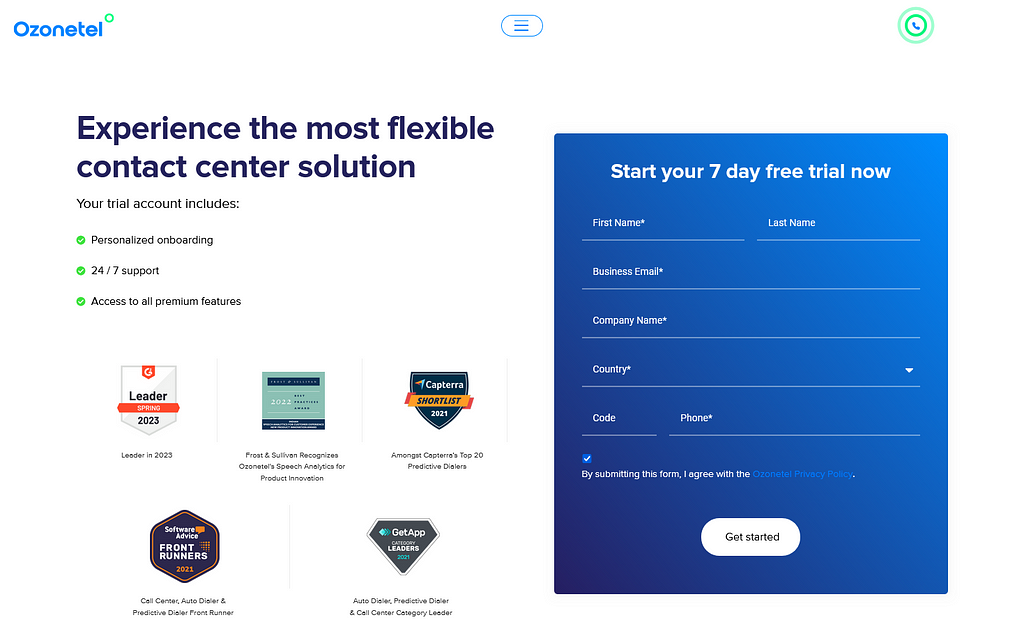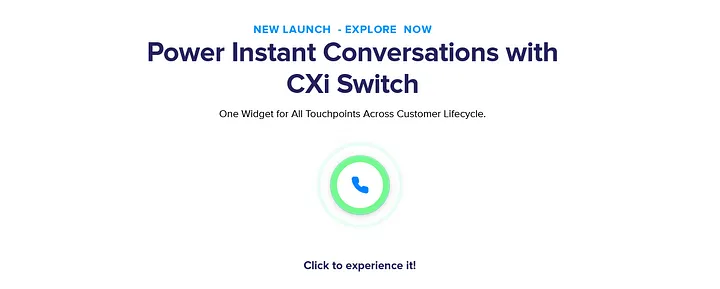- Resources
- 15 Ways to Manage Angry Customers
15 Ways to Manage Angry Customers

Handling angry customers is the toughest part of customer service. Several things have usually broken down by the time a customer is upset or even irate. It’s a critical point that can easily be the end of that customer’s journey with us. Or, if we employ the right techniques, we can salvage their business and even regain positive sentiment. We’ve assembled some words of advice from three thought leaders with varying perspectives on dealing with customers. Darren Prine is a Managing Partner at Cloud Tech Gurus, a firm specializing in technology solution matchmaking. Leslie O’Flahavan, specializes in communication and is the owner of E-Write. And Megan Merrick is the Customer Experience Vice President of Happier Living, an outpatient mental health private practice. They each have several de-escalation techniques to share that can help customer service call centers handle angry customers.
In this article, we will explore:
15 Ways to Manage Angry Customers
1. Express empathy with your customers – Prine, O’Flahavan
 Darren Prine, Leslie O’Flahavan, and Ramakrishnan Nagarajan, all recommend using empathy. It’s a powerful de-escalation technique for customer service call centers. Why? Simply because everyone appreciates being understood and interacting with someone who just gets it. Particularly when things have gone wrong. But empathy can be challenging when you’re handling irate customers or trying to communicate with someone who is stressed, upset, tense, and feel they have no control. Leslie has simple advice for putting empathy into action: “demonstrate your ability to see the situation their way.” A simple way to let customers feel they’re heard is by following Ramakrishnan advise “Repeat customer reported issue to ensure it is correctly captured” This not only makes your customer feel heard, and calm down, it also ensures that your agent captures the correct information. ALSO READ: Sue Duris advises us on on how to create a more empathetic customer service team.
Darren Prine, Leslie O’Flahavan, and Ramakrishnan Nagarajan, all recommend using empathy. It’s a powerful de-escalation technique for customer service call centers. Why? Simply because everyone appreciates being understood and interacting with someone who just gets it. Particularly when things have gone wrong. But empathy can be challenging when you’re handling irate customers or trying to communicate with someone who is stressed, upset, tense, and feel they have no control. Leslie has simple advice for putting empathy into action: “demonstrate your ability to see the situation their way.” A simple way to let customers feel they’re heard is by following Ramakrishnan advise “Repeat customer reported issue to ensure it is correctly captured” This not only makes your customer feel heard, and calm down, it also ensures that your agent captures the correct information. ALSO READ: Sue Duris advises us on on how to create a more empathetic customer service team.
2. Acknowledge their angry feelings – O’Flahavan
Acknowledgment is a highly emotionally intelligent customer service de-escalation technique. This is because validation is one of the best ways to defuse anger and combativeness. Acknowledging and validating their feelings demonstrates to people that you understand them, know that something wrong has been done, and are on their side. A simple way to do this is by reflecting their feelings and complaints to them. It’s an effective way of turning things around and getting back on the path to positive interactions and resolution.
3. Listen, then speak – Merrick
 Another de-escalation technique for customer service call centers is to let them get everything off their chest. Megan says, “your customer is angry – let them speak, vent, or ask questions first. Listen to understand, then respond.” Even if agents know what’s going on and have an immediate answer, it’s helpful to simply let customers tell you how they feel. Cutting them off, even to provide a resolution, may still leave them with pent-up dissatisfaction. And if they don’t vent to you, they may do so on social media. There’s value in listening to an irate customer call. You gain insight into exactly where service fell short, why it was so upsetting, and may recognize service blind spots or missed opportunities for improvements.
Another de-escalation technique for customer service call centers is to let them get everything off their chest. Megan says, “your customer is angry – let them speak, vent, or ask questions first. Listen to understand, then respond.” Even if agents know what’s going on and have an immediate answer, it’s helpful to simply let customers tell you how they feel. Cutting them off, even to provide a resolution, may still leave them with pent-up dissatisfaction. And if they don’t vent to you, they may do so on social media. There’s value in listening to an irate customer call. You gain insight into exactly where service fell short, why it was so upsetting, and may recognize service blind spots or missed opportunities for improvements.
4. Effectively solve the customer’s problem – Prine, Ramakrishnan
 This might sound obvious. But in the race to wow our customers with stellar experiences, we’re starting to lose sight of the basics. Ramakrishnan says “Provide appropriate solution if possible at that moment,else take required time from customer to ensure appropriate solution is offered. Adhere to resolution timelines.” PWC’s customer intelligence survey breaks effective customer service down into four elements: speed, convenience, knowledgeable help, and friendly service. Surpassing expectations with slick, omnichannel features is great. But only when these enhancements are built on a solid foundation of effective service. So, if your agents have access to expanded customer insight, make sure they know how to focus on the essential information.
This might sound obvious. But in the race to wow our customers with stellar experiences, we’re starting to lose sight of the basics. Ramakrishnan says “Provide appropriate solution if possible at that moment,else take required time from customer to ensure appropriate solution is offered. Adhere to resolution timelines.” PWC’s customer intelligence survey breaks effective customer service down into four elements: speed, convenience, knowledgeable help, and friendly service. Surpassing expectations with slick, omnichannel features is great. But only when these enhancements are built on a solid foundation of effective service. So, if your agents have access to expanded customer insight, make sure they know how to focus on the essential information.
5. Ensure agents have a full view of the customer journey across all channels so they can see all recent previous interactions to better understand the customer’s issues and frustrations – Prine
 Is anything more frustrating than having to repeat yourself to agent after agent? Or re-explain a complicated situation on a second call to supervisors? Your agents will be more effective when handling irate callers if they have full omnichannel visibility and insight into customer profiles. Providing agents with comprehensive customer insight is a de-escalation technique that all customer service call centers should use.
Is anything more frustrating than having to repeat yourself to agent after agent? Or re-explain a complicated situation on a second call to supervisors? Your agents will be more effective when handling irate callers if they have full omnichannel visibility and insight into customer profiles. Providing agents with comprehensive customer insight is a de-escalation technique that all customer service call centers should use.
6. Avoid stoking their anger by providing non-answers or evasive responses – O’Flahavan
On the flip side, customers who feel they are being given the run-around tend to become even more riled up. Agents can unintentionally create a feeling of dismissiveness by communicating in a way that’s unclear, vague, or cursory. Customers should always be kept in the loop, even if this means explaining why an issue hasn’t yet been resolved. If answers can’t be given right away, set a precise follow-up time when they will receive more information.
7. Use emotion words in your response – O’Flahavan
What’s the business value of an emotional connection? Any one-on-one interaction is an opportunity to create an emotional connection with the customer. If you’re expecting agents to do this, they need to express positive emotions around their service. Injecting upbeat, dynamic, and emotion-based words into the conversation keeps agents from sounding detached or impersonal. O’Flahavan suggests phrases like “I’m eager to help you” or “I’m happy to report that your order will be delivered on Tuesday, as promised.” Purposefully using beneficial words helps agents stay on the right track while attempting to handle irate callers.
8. Avoid making them angrier by sending a partial response or failing to customize a templated response – O’Flahavan.
This is another customer service pet peeve. If a customer has taken the time to send in a detailed explanation, the last thing they want back is an obvious form response. Even if their issue is being addressed, a templated answer can make it seem as though they’ve been brushed off. Customers should always be aware that their inquiry has been seen or heard by a real human being. A quick personal check-in can be done to let a customer know that the matter is being addressed and that an agent will follow up with them shortly.
9. Expedite it – Merrick
Harvard Business Review notes that good service happens fast and is key for managing angry customers. According to HBR, this means within 5 minutes by phone, 1 hour on social media, and 1-24 hours by email. This resonates with Megan Merrick’s insights from creating delightful customer experiences. “When a customer is irate it’s important that the right member of your organization speaks to them as soon as possible,” Megan says. “Whether an agent contacts them, a manager, or another member of the team, it’s important that you address the issue with the customer in a timely manner. Every minute spent not replying is more time for the customer to write off your brand and find a competitor.” HBR also found that a rapid response to a customer with an issue will actually generate positive feelings and make them more likely to do more business.
10. Honesty – Merrick
If you want to calm an irate customer down, tell them exactly what’s going on and keep them fully in the loop. Customers are far more willing to give leeway when they know exactly what’s going on. Megan says, “it’s important to be honest with a customer that’s upset. Be frank about their expectations, how they weren’t met, and how the situation can be resolved.” This de-escalation technique will help you earn and retain your customer’s trust.
11. Make realistic promises – Merrick
Setting promises that can’t be kept isn’t helpful. It only delays the inevitable and intensifies negative brand perceptions. Megan says, “speaking of expectations, at this point, it’s imperative that realistic promises are made. Don’t say what you think the customer wants to hear. Now more than ever the customer will appreciate honesty, and you don’t want to make a promise that can’t be met (it’s hard to bounce back from two escalations!)” She’s right. 59% of US customers will leave a company after several poor experiences, even when it’s a brand they like.
12. Follow up – Merrick
Megan Merrick suggests doing outreach after receiving and resolving an irate customer call. “If a resolution was agreed upon, follow up with the customer to check on their experience,” Megan says. “They’ll appreciate the attention, and hopefully you’ll earn a customer (and maybe even a brand ambassador) for life.” Following up gives you the chance to create a final, positive touchpoint. You can gauge their experiences after they’ve cooled down and try to reframe their brand perception. Or even use this as a chance to offer a concession.
13. Offer some kind of reward or concession to compensate for their frustration – Prine
Bribing your way back into good favor works. But only after some type of resolution is made. Perks, rewards, and delightful experiences don’t win over customers who haven’t yet received proper service. But good service alone isn’t enough to retain loyalty. One study found that 20% of customers intended to switch companies even after a satisfactory service interaction. So, consider throwing in some extra bonuses once your agents have rectified the issue. Agents should have the authority to dispense complimentary products, services, or other benefits when handling irate callers.
14. Use an AI solution to predict and prevent escalations – Prine
Darren Prine suggests bringing in the tech with some AI assistance. Customer service AI has advanced enough to help handle irate customer service calls since it can now recognize emotions, intent, and handle increasingly complex conversational dialogue. Customers are quite used to receiving automated service. Unfortunately, this experience hasn’t always been ideal. And unhappy customers only become further incensed when dealing with robotic service. Conversational AI is a key de-escalation technique for customer service call centers. When it’s integrated into automated areas – like chatbots and phone attendants – customer issues can be quickly detected and directed to the right agent.
15. I don’t think we need to “handle” angry customers, but we do need to respond to them – O’Flahavan
Leslie O’Flahavan reminds us to be mindful of our approach to irate customer calls. Are your agents focused on managing customers or are they engaging with customers on a human level? Always keep agents aware of your customers’ emotional states. This isn’t your customer at their best self. They’re more likely to be irrational, impatient, and unwilling to give you any leeway. When agents are handling irate callers, sticking to even the most sophisticated script can leave customers feeling disregarded. So, take the time to respond to them in the moment without being bound by rote answers.
All the Tools an Agent Might Need
Handling irate customers isn’t fun. Motivating your team to stay calm, positive, and helpful is a challenge. While you choose the psychological techniques and anger mitigation strategies that work best for your team, our solutions can help make things a little easier for both you and your agents. Ozonetel gives you all the latest, advanced tools that can make these de-escalation techniques easier. Tools like smart omnichannel routing, so that customers are sent to the right agent as quickly as possible, CTI integrations so your agents have all the information they need and know exactly what’s going on, and speech analytics with real-time sentiment analysis to help lower the rate of angry customer calls. Does your customer service call center get a high volume of angry calls? Experience how Ozonetel can improve your customer calls today.







